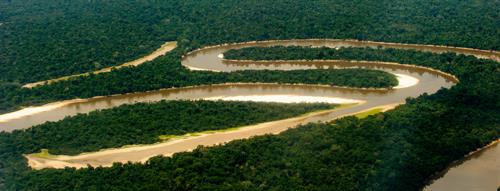
PUMPA - SMART LEARNING
எங்கள் ஆசிரியர்களுடன் 1-ஆன்-1 ஆலோசனை நேரத்தைப் பெறுங்கள். டாப்பர் ஆவதற்கு நாங்கள் பயிற்சி அளிப்போம்
Book Free DemoAlmost half of the continent is covered by the plains. South America's three important river basins are the Amazon, Orinoco and Paraguay/Paraná. The biggest among them is the Amazon. The Amazon river basin is almost 7 million square kilometres (2.7 million square miles), making it the world's largest watershed.

Amazon River - South America
Glaciers of the Andes fed the tributaries, which covered most of northern South America. Amazon empties 209,000\ cubic metres (7,381,000\ cubic feet) of freshwater into the Atlantic Ocean every second.
The fine silt deposited by the Amazon river consists of alluvial deposits. It is the thickly forested part of the world. It is widest near the Andes and narrowest near the mouth of the Amazon river.
The Orinoco basin is separated from the Amazon basin by low interfluves. The Orinoco river flows north of the Amazon. It originates in the Guiana Highlands of northern Brazil and discharges at the Atlantic Ocean in Venezuela. The Orinoco river basin covers approximately 80\ per cent of Venezuela and 25\ per cent of Colombia. It is also one of the most productive parts of the continent. The Parana - Paraguay plain is an ancient rocky surface covered with alluvial deposits and is rich in petroleum deposits.
Reference:
https://www.nationalgeographic.org/encyclopedia/south-america-physical-geography/